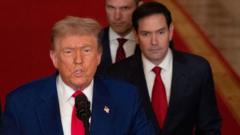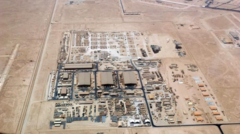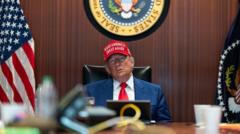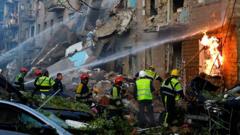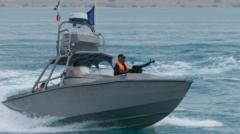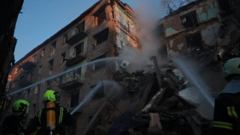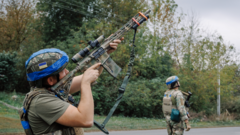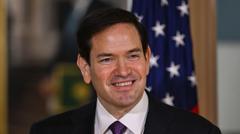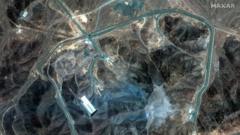A key focus will be Trump's relationship with Europe and the implications for NATO's future in the face of mounting security challenges.
**A Pivotal NATO Summit: Trump’s Leadership Tested Amid Global Tensions**
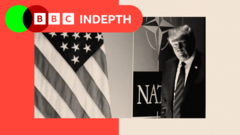
**A Pivotal NATO Summit: Trump’s Leadership Tested Amid Global Tensions**
The world awaits President Trump's NATO summit as tensions escalate following US attacks on Iran.
As the geopolitical landscape becomes increasingly complex, President Donald Trump is expected to arrive in the Netherlands for a NATO summit, signaling a potentially pivotal moment for the alliance. This summit comes on the heels of heightened tensions following the US strikes on Iranian nuclear sites, raising questions about the focus and priorities of the meeting.
Trump's return to the NATO fold marks his first summit since being re-elected, and European leaders are keen to mend strained relations over various contentious issues, including trade and military spending. High-ranking diplomats have expressed concerns about potential fractures within the alliance, especially with Russia and China closely monitoring the situation.
The summit, orchestrated by NATO's Secretary General Mark Rutte, aims to showcase European commitment to increased defense spending—an initiative Trump has long championed. European allies are set to commit to spending 5% of their GDP on defense, a point Trump is expected to leverage for political gain. However, the recent escalation of conflict between the US and Iran throws a wrench into the carefully crafted plans; many speculate that Trump may opt to focus on the Situation Room rather than engage with allies over pressing global issues.
The relationship between the US and Europe hangs in the balance as Europe's trust wavers due to perceived inconsistencies in Trump's approach to NATO and its adversaries. Notably, while Trump has demanded increased funding from allies, he has justified exempting the US from the same commitment, further complicating negotiations.
As European defense strategies evolve, nations like Poland are stepping up their military investments, bolstering NATO's collective readiness. Yet, concerns about disparities in defense expenditures and strategic capabilities persist, reflecting deeper issues within the alliance.
This summit is being framed not only as an opportunity to solidify defense commitments but also as a litmus test for NATO's future resilience amid global turbulence. As such, the outcome of this gathering may signal a fundamental shift in how Europe approaches its security responsibilities and its reliance on US support.
The dynamics at play underscore that the success of the summit will hinge significantly on Trump’s leadership and decision-making as he contemplates the balance between national interests and collective security. With the stakes higher than ever, the world watches closely as key players gather to chart NATO's path forward in an increasingly uncertain international landscape.
Trump's return to the NATO fold marks his first summit since being re-elected, and European leaders are keen to mend strained relations over various contentious issues, including trade and military spending. High-ranking diplomats have expressed concerns about potential fractures within the alliance, especially with Russia and China closely monitoring the situation.
The summit, orchestrated by NATO's Secretary General Mark Rutte, aims to showcase European commitment to increased defense spending—an initiative Trump has long championed. European allies are set to commit to spending 5% of their GDP on defense, a point Trump is expected to leverage for political gain. However, the recent escalation of conflict between the US and Iran throws a wrench into the carefully crafted plans; many speculate that Trump may opt to focus on the Situation Room rather than engage with allies over pressing global issues.
The relationship between the US and Europe hangs in the balance as Europe's trust wavers due to perceived inconsistencies in Trump's approach to NATO and its adversaries. Notably, while Trump has demanded increased funding from allies, he has justified exempting the US from the same commitment, further complicating negotiations.
As European defense strategies evolve, nations like Poland are stepping up their military investments, bolstering NATO's collective readiness. Yet, concerns about disparities in defense expenditures and strategic capabilities persist, reflecting deeper issues within the alliance.
This summit is being framed not only as an opportunity to solidify defense commitments but also as a litmus test for NATO's future resilience amid global turbulence. As such, the outcome of this gathering may signal a fundamental shift in how Europe approaches its security responsibilities and its reliance on US support.
The dynamics at play underscore that the success of the summit will hinge significantly on Trump’s leadership and decision-making as he contemplates the balance between national interests and collective security. With the stakes higher than ever, the world watches closely as key players gather to chart NATO's path forward in an increasingly uncertain international landscape.


